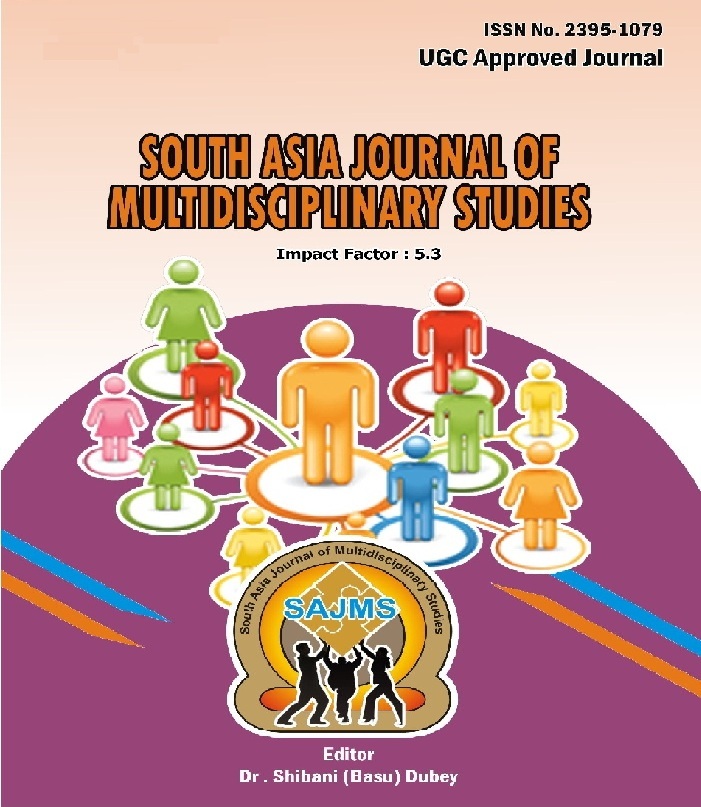Climate Change and Energy Efficiency: Challenges and Issues in India
Abstract
Human beings are trying to exploit the nature from the day of his appearance on the surface of the earth. Earlier he was wandering from one place to another place in search of food. Slowly and gradually he learnt various means of extracting the resources from nature for his comfort. His greed keep on increasing with the increase in population and level of technology. In his race for increasing level of comfort, he forget what he is paying back to the nature. The waste products, which resulted from the technology he used, increased in amount and their impact are felt globally in the form of climate change. Increasing average temperature, drought, outbreaks of virus and insects, declining water supplies, reduced agricultural yields, flooding, soil erosion and depleting ozone layer are some of these. The level has increased so much that human survival is threatened. As a result, the problem was realised and attempts are made to control the factors responsible for climate change at local, state, national and international level. Initially the focus was on replacing the technology and the machines responsible for increasing temperature. We were able to achieve some success in replacing the green house gas emitting appliances. Then there was a debate of developed versus developing that who is responsible, who will bring down the consumption level and who will bear the cost. But the debate remained inconclusive and still going on. Later on it was decided to find out some other ways also, increase in energy efficiency is one of the most important way out. Since by increasing the levels of energy efficiency, energy will be saved. Saving energy is equivalent to production of energy. By saving energy, the burning of fuels or consumption of other sources of energy would be saved and the carbon emission level will be brought down. India on its part set a target to increase energy efficiency level in India by adopting various measures as an international commitment. Under global compulsions, Government of India enacted the Energy Conservation Act, 2001. This act put forth a legal framework, institutional arrangement and a regulatory mechanism at the central and state level for energy efficiency efforts in India. Designated consumers, standard and labeling of appliances, energy conservation building codes, creation of institutional set up (BEE) and establishment of energy conservation fund are five major features of the Act. Standard and labeling program aims to provide the consumers an informed choice about the energy-saving and thereby the cost saving potential of the relevant marketed product. The equipments/ appliances notified are AC's. Tube lights, frost free refrigerators, distribution transformers, induction motors, direct
cooling refrigerators, geysers, ceiling fans, colour T.V.'s, agricultural pump sets, LPG stoves and washing machines. The National Action Plan on Climate Change (NAPCC) was launched in June, 2008 to address the issues of climatic change and ecological sustainability. National Mission for Enhanced Energy Efficiency (NMEEE) is a flagship program under NAPCC. The government programs launched are to be adopted by households across the country. The present paper attempts to highlight various challenges and issues involved to achieve the target of enhanced energy efficiency.
References
Government of India: National Action Plan for Climate Change, posted on Government of India website: http://www.moef.nic.in/downloads/home/Pg01-52.pdf. 2. Sinha, A. (January 3, 2015 ): Four new missions to boost response to climate change, http://indianexpress.com/article/india/india-others/four-new-missions-to-boost-response-to-climate-change/ 3. Government of India (posted on 06 Apr 2017):National Mission for Enhanced Energy Efficiency ,https://beeindia.gov.in/content/nmeee-1 4.ByETBureau|Jun05,2009,http://economictimes.indiatimes.com/articleshow/4618768.cms?utm_source=contentofinterest&utm_medium=text&utm_campaign=cppst
Downloads
Published
Issue
Section
License
Submission Preparation ChecklistSubmission Preparation Checklist
Before proceeding with your submission, please ensure that you have completed the following checklist. All items on the list must have a checkmark before you can submit your manuscript:

